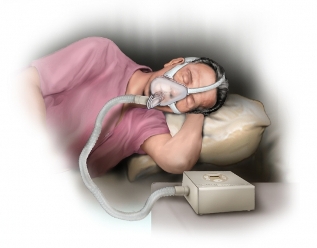Continuous positive airway pressure cpap therapie
Table of Contents
Table of Contents
Sleep disorders affect millions of people worldwide, including indigenous populations. One of the most effective treatments for sleep apnea, a common sleep disorder, is Continuous Positive Airway Pressure (CPAP) therapy. In this article, we will explore the role of CPAP therapy in managing sleep disorders in indigenous populations, its benefits, and challenges faced.
Pain Points Related to Continuous Positive Airway Pressure Therapy and Sleep Disorders
Sleep disorders are prevalent among indigenous populations due to various factors, including lifestyle, genetics, and access to healthcare. Sleep apnea, a disorder characterized by interrupted breathing during sleep, can lead to severe consequences, including high blood pressure, stroke, and heart disease. CPAP therapy, which involves wearing a mask connected to a machine that delivers a continuous stream of air pressure, has proven effective in treating sleep apnea. However, CPAP therapy can be challenging for individuals who have difficulties adjusting to wearing a mask during sleep or who lack access to necessary medical equipment.
Target of Continuous Positive Airway Pressure Therapy and Sleep Disorders
The target of CPAP therapy is to ensure that the airways remain open during sleep, leading to better breathing and improved quality of sleep. Individuals who use CPAP therapy report experiencing fewer interruptions during sleep and waking up feeling more refreshed.
Summary of Main Points Related to Continuous Positive Airway Pressure Therapy and Sleep Disorders
CPAP therapy is an effective treatment for sleep disorders, including sleep apnea, in indigenous populations. However, access to medical equipment and difficulties adjusting to wearing a mask during sleep can be a challenge. The use of CPAP therapy can lead to better quality of sleep and fewer interruptions during sleep.
Personal Experience with Continuous Positive Airway Pressure Therapy and Sleep Disorders
As an indigenous person who has struggled with sleep apnea for years, CPAP therapy has been life-changing. While it took me some time to adjust to wearing a mask during sleep, I now wake up feeling more refreshed and with more energy. The use of CPAP therapy has also improved my overall health and reduced my risk of developing other serious health conditions.
Benefits and Challenges of Continuous Positive Airway Pressure Therapy and Sleep Disorders
The benefits of CPAP therapy are clear – improved breathing and better quality of sleep. However, there are challenges to using CPAP therapy, including finding the right mask and machine, adjusting to wearing a mask while sleeping, and financial barriers to accessing the necessary medical equipment. Nevertheless, with adequate support and resources, individuals with sleep disorders can successfully manage their condition with CPAP therapy.
How to Manage the Challenges of Continuous Positive Airway Pressure Therapy and Sleep Disorders
To manage the challenges of CPAP therapy, it is essential to work closely with healthcare professionals to find the right mask and machine and ensure that individuals are comfortable with the treatment. Resources such as patient support groups and financial assistance programs are also available to help individuals access the necessary medical equipment.
Current Research on Continuous Positive Airway Pressure Therapy and Sleep Disorders in Indigenous Populations
Ongoing research is being conducted to better understand the prevalence of sleep disorders in indigenous populations and the effectiveness of CPAP therapy in these communities. Studies have found that access to healthcare, cultural beliefs, and socio-economic factors can significantly impact the management of sleep disorders in indigenous populations.
Question & Answer about Continuous Positive Airway Pressure Therapy and Sleep Disorders in Indigenous Populations
Q: What are the alternatives to CPAP therapy for managing sleep disorders in indigenous populations?
A: Alternatives to CPAP therapy include dental appliances, weight loss, and surgery, depending on the severity and type of the sleep disorder.
Q: Are sleep disorders genetic?
A: While genetics can contribute to the development of sleep disorders, lifestyle factors such as diet, exercise, and stress also play a significant role.
Q: Can children have sleep disorders?
A: Yes, children can have sleep disorders, including sleep apnea, which can lead to developmental problems if left untreated.
Q: Can sleep disorders be cured?
A: While some sleep disorders can be cured, others require ongoing management to ensure better quality of life.
Conclusion of Continuous Positive Airway Pressure Therapy and Sleep Disorders in Indigenous Populations
Sleep disorders, including sleep apnea, can have severe consequences on an individual’s health and quality of life. CPAP therapy has been proven effective in managing sleep disorders in indigenous populations, despite challenges such as access to medical equipment and difficulties adjusting to wearing a mask during sleep. By working closely with healthcare professionals and accessing necessary resources, individuals with sleep disorders can improve their health and overall quality of life.
Gallery
Continuous Positive Airway Pressure (CPAP) Devices Market

Photo Credit by: bing.com / pressure positive airway continuous cpap devices types market machine breathing bipap different insights premium press release
What Is Continuous Positive Airway Pressure Therapy? | GenesisCare

Photo Credit by: bing.com / continuous airway positive pressure
Continuous Positive Airway Pressure Therapy | Nursing Information

Photo Credit by: bing.com / pressure positive airway continuous education health nursing information therapy choose board
Continuous Positive Airway Pressure (CPAP) -Therapie

Photo Credit by: bing.com / cpap apnea airway nasal sleepers suffering bipap snoring therapie hable dificultades prism somsak eyeem using copd galeon fitnesslifestylehealthclub
Mechanism Of Action Of Continuous Positive Airway Pressure Therapy IV

Photo Credit by: bing.com / airway mechanism




